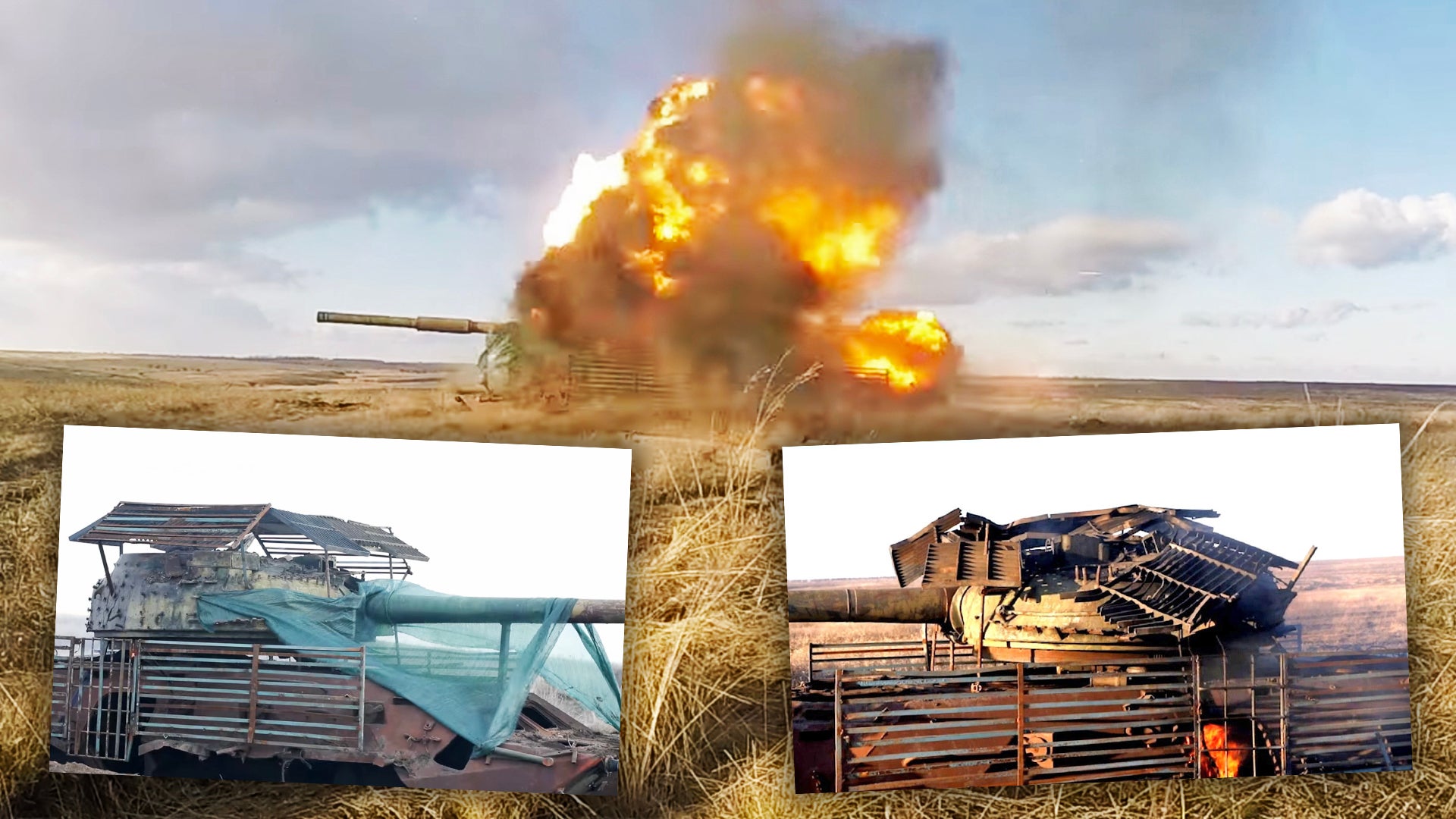The Ukrainian Army continues to refine its anti-armor tactics using its American-made Javelin anti-tank missiles. Recent trials pitted the weapon against a static target equipped with improvised protection similar to the type that’s been appearing on the turrets of some Russian tanks of late, including those noted close to Ukraine’s border areas. That is a topic that you can read about in our previous article here. The new Javelin test comes as fears about a new Russian military intervention on Ukrainian territory grow and as Kyiv continues to battle Russian-supported forces in the eastern Donbas region, including using Javelin missiles.
The video of the Javelin live-fire exercise appeared today on the Facebook page of Ukraine’s Joint Forces Press Service. More details have been provided on the page of the General Staff of the Armed Forces of Ukraine, which notes that the maneuvers took place on a training range in the east of the country, close to the front lines. The target was engaged at a distance of around 1 mile, although the missile has a demonstrated ability to hit targets up to nearly three miles away in the past. The troops involved had apparently not fired the Javelin before and were training prior to being deployed in Donbas.
Of particular interest, however, is the target that’s shown being engaged. This appears to be a Cold War-era tank turret — perhaps from a T-64 — mounted on what looks like the chassis of a BTR-series armored personnel carrier.
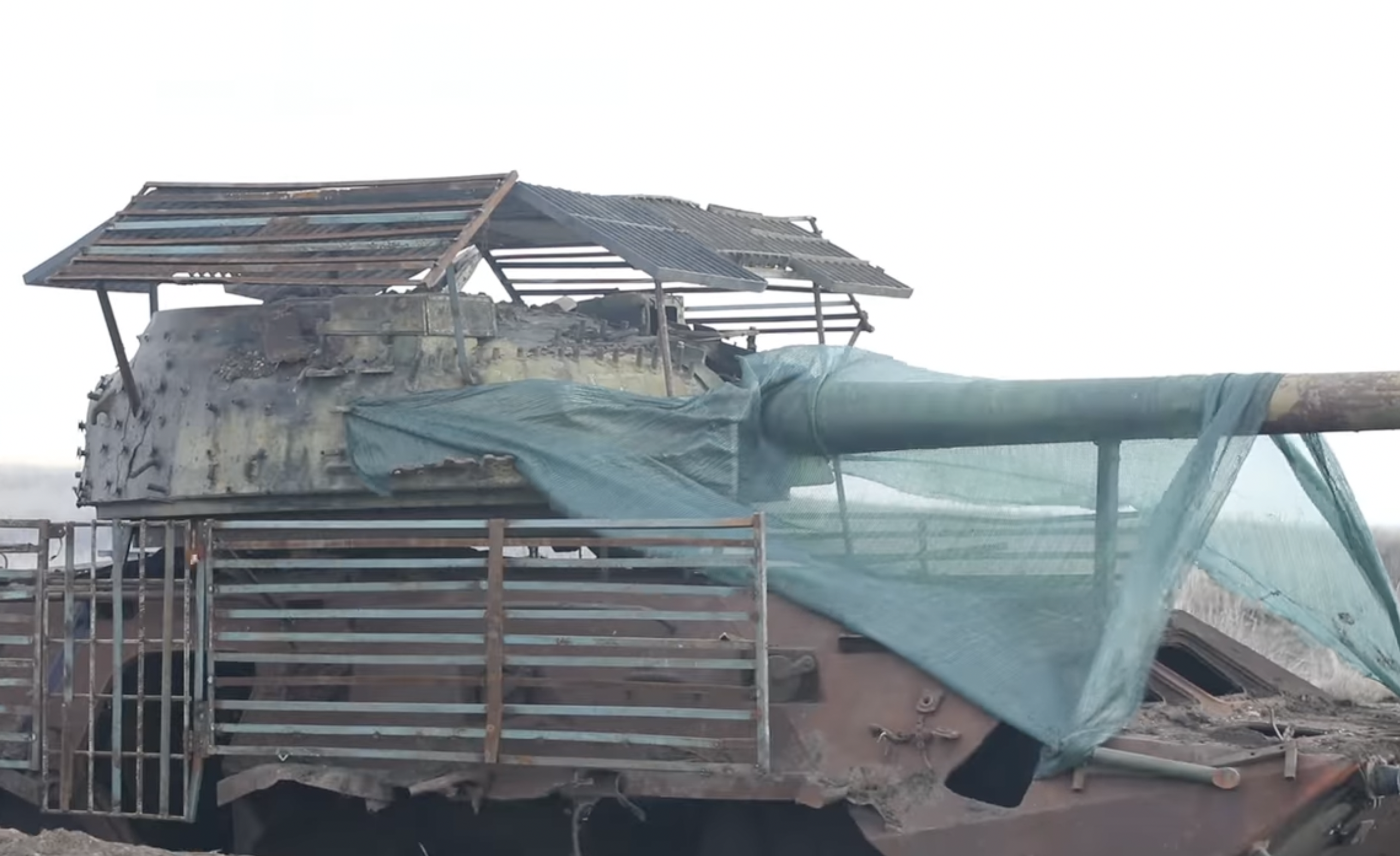
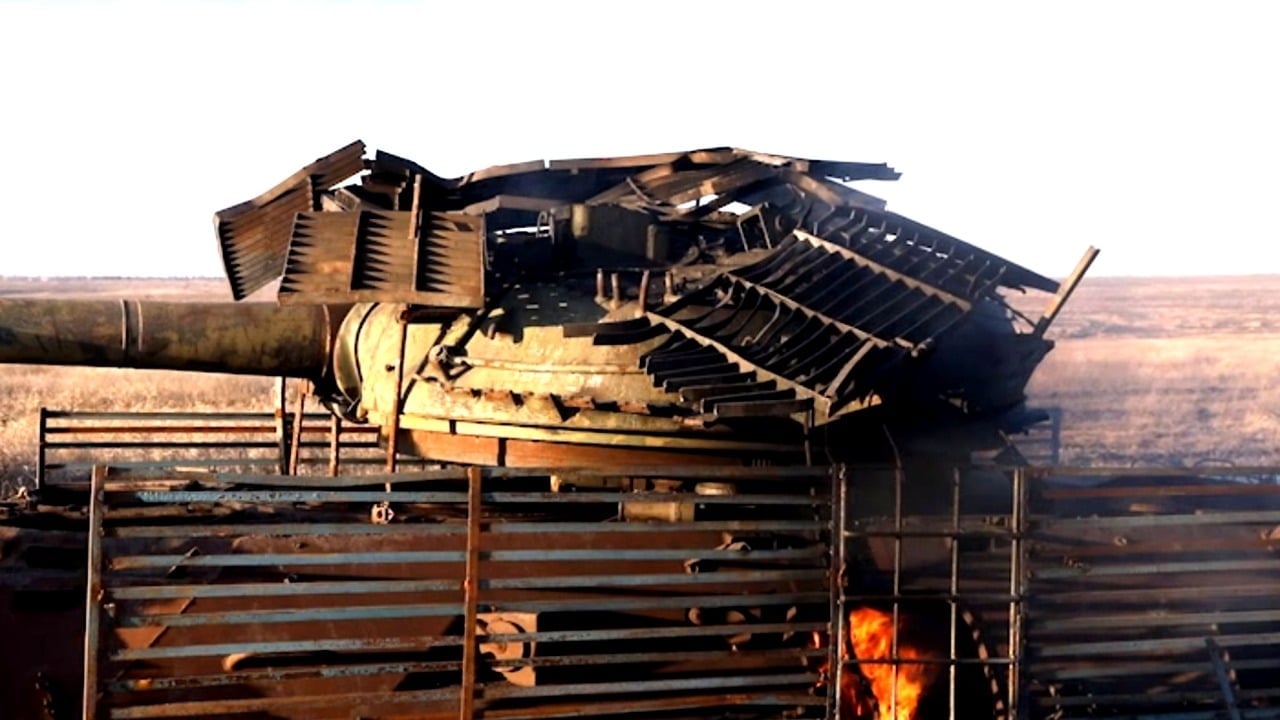
Atop the turret is the same type of ad-hoc cage armor that has been increasingly appearing on Russian tanks recently, as seen in the examples below, the first of which was apparently spotted in Russian-occupied Crimea.
The tank target is also fitted with the side-mounted slat armor of the type that has become a familiar sight during the ongoing conflicts in Libya and Syria, and in Iraq, primarily to defend against side-on attacks from high-explosive anti-tank rounds, especially those fired from rocket-propelled grenades (RPGs).
In the video, one missile appears to miss, but the target takes one Javelin hit, leaving much of the top-mounted cage armor ripped off and the hull burning, representing its successful destruction. What is not clear, however, is how representative this target is, at least compared with the up-armored tanks that have been noted recently in Russian service.
The target on the Ukrainian range was seemingly not fitted with any additional defensive measures, such as explosive reactive armor (ERA), let alone more advanced countermeasures, such as active protection systems that are designed to detect an incoming projectile and launch a countermeasure of some type. Meanwhile, its basic level of armor protection is at least a generation behind the oldest tanks likely to be fielded by Russia in any confrontation, and the fact that the target apparently combines both tank and BTR components suggests only limited robustness overall.
On top of that observation, we have no idea how long this target had been used for, with or without the addition of the cage on top. By their nature, range targets like this may be hit dozens of times before finally being destroyed, even if only by small-arms fire, further undermining their resilience.
Furthermore, as we discussed in the past, although the Javelin missile attacks from above (which can be seen clearly at one point in the video), it’s likely that the turret-mounted cage armor is primarily intended to protect against attacks by loitering munitions and other armed unmanned aircraft.
At the same time, as we previously pointed out, the additional armor on top could still decrease the effectiveness of certain top-attack guided missiles to at least some degree. The Javelin can be fired straight at a target or via a pop-up maneuver, after which it dives down onto the target, exploiting the typically more limited armor protection on top of tanks and armored vehicles.
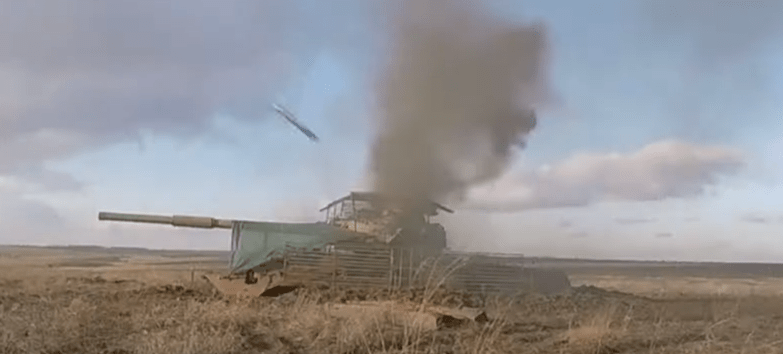
While the metal structures atop a tank turret could potentially interfere with the Javelin’s detonation sequence, and reduce the probability of a kill, the cage armor alone is unlikely to offer substantial protection against an advanced anti-tank guided missile of this kind. That analysis would seem to be borne out by the video, once again with the caveat that this is very much an extemporized target and not representative of the full degree of armor protection commonly found on frontline Russian tanks.
With that in mind, it’s quite possible that the video published by the Joint Forces Press Service, and the exercise itself, was intended as much for propaganda value as it was a meaningful test of the Javelin against Russian armor practices.
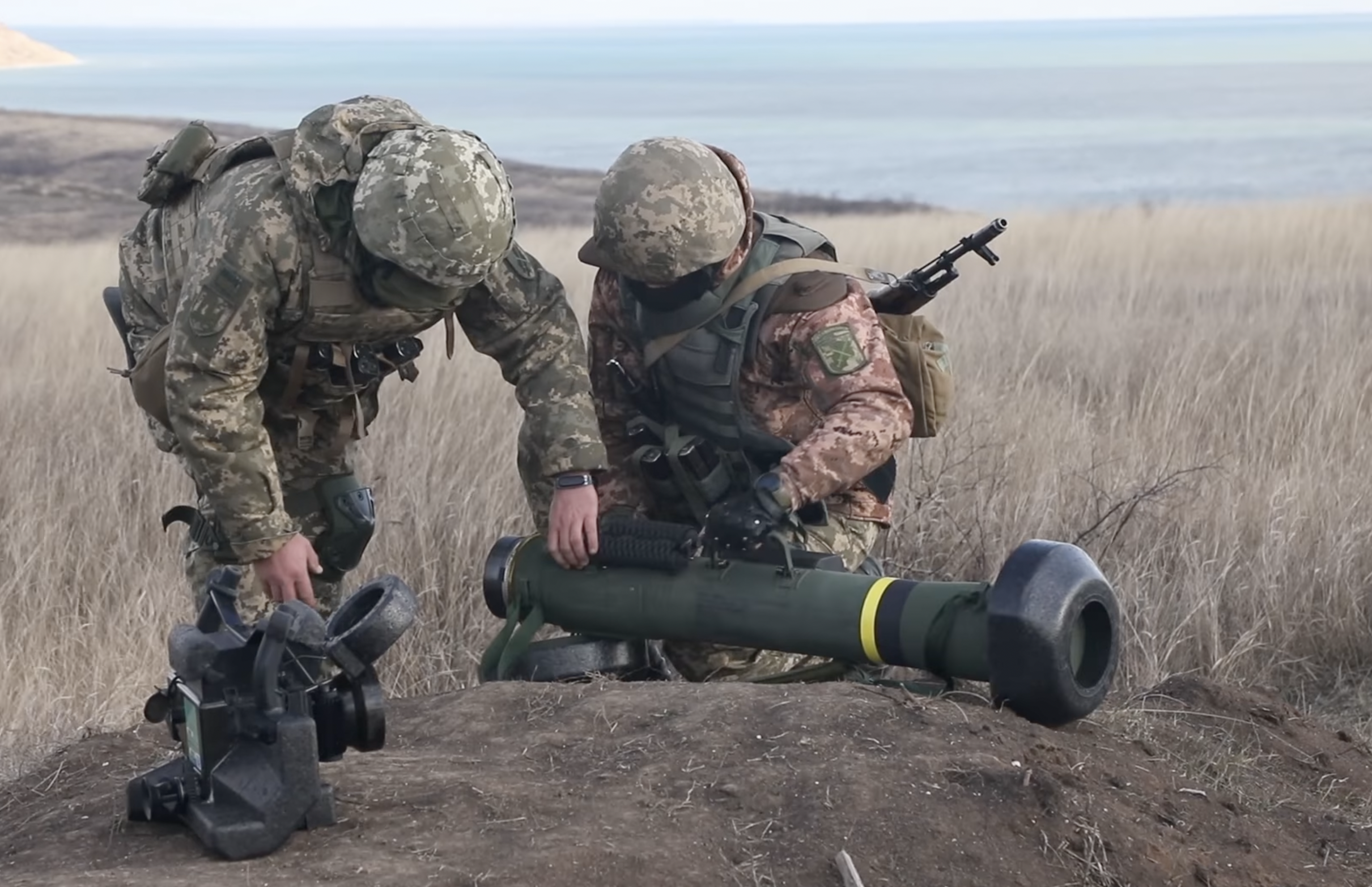
Ukraine’s acquisition of the Javelin missile has already been assessed as being a significant factor in any future major military confrontation with Russia. The missile has already been combat-tested in Ukrainian hands. Last month, the head of Ukraine’s top military intelligence agency confirmed that troops in the Donbas region had fired Javelins against Russian or Russian-supported forces.
The background to the U.S. government’s decision to approve the sale of Javelins to Ukraine in 2018 was a major shift in policy. It was only last year, however, that the U.S. government allowed Ukrainian troops to field these weapons on the front lines in Donbas, so long as they were used “defensively.” Previously, Ukraine was only allowed to deploy the missiles in the case of a major Russian invasion of the country.
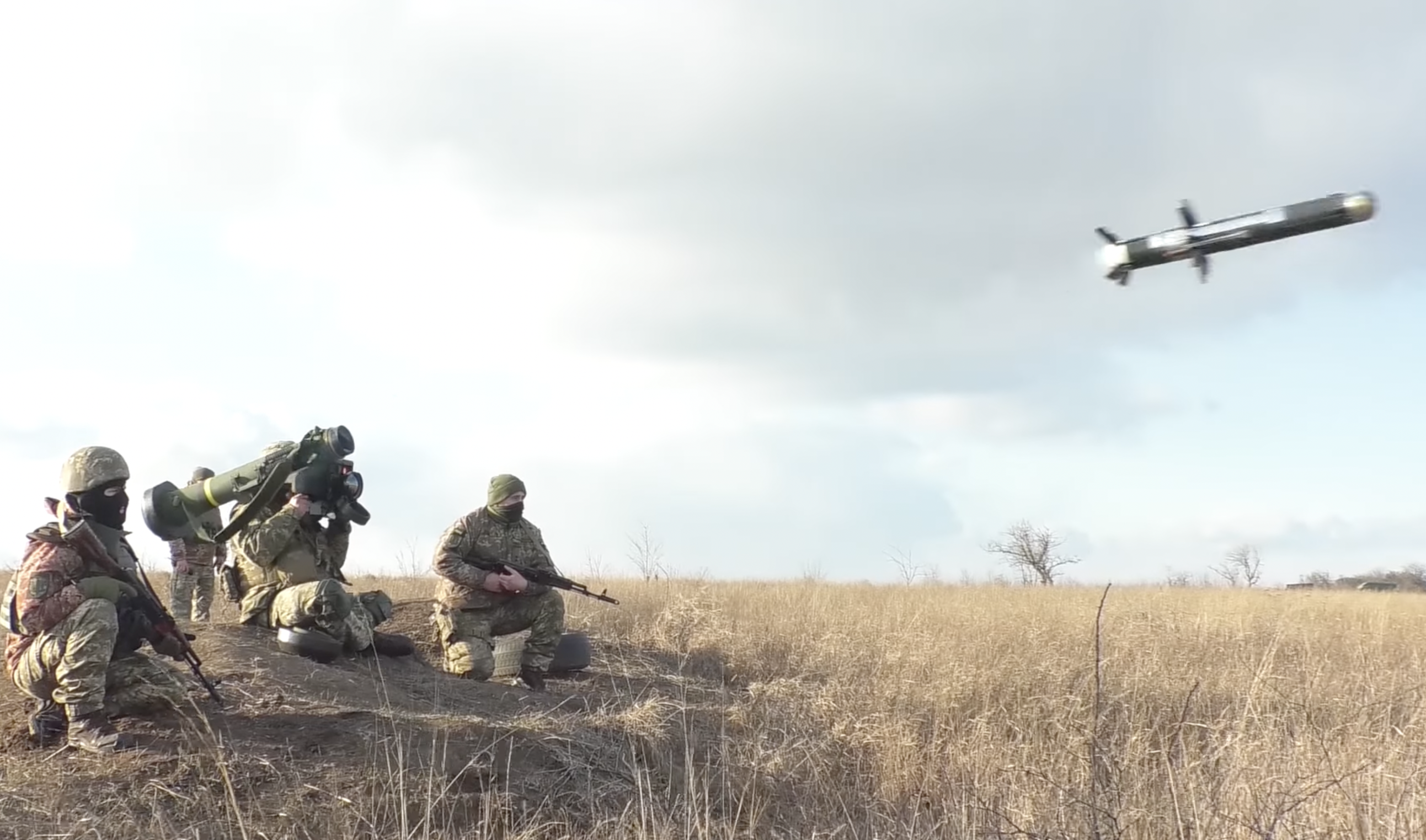
Now that the Javelin has been employed in combat by Ukraine, the country will no doubt be seeking to capitalize on the significant psychological deterrent value that they offer, as a warning against any potential aggression.
The timing of this video is significant in itself, with much attention now focused on Russia’s positioning of heavy armor, artillery, air defense systems, and even long-range missiles in its border areas close to Ukraine. At the same time, U.S. intelligence has warned that the number of Russian troops deployed in the region is likely to grow to approximately 175,000 troops, with plans for a multi-front offensive as soon as early next year.
This is not the first time that Russia has made large-scale deployments of troops and materiel to territory opposite Ukraine, with similar movements in April also leading to fears of a potential invasion. For now, though, tensions are once again high, with Russia’s President Vladimir Putin stressing only today that he would be willing to launch an intervention if he felt that Ukraine or its western allies were themselves gearing up for an attack on Russia’s proxies in the country. Putin has also made various other highly concerning assertions and demands that were not made during the troop buildup a year ago.
Should Russian ground forces roll across the border, then the Ukrainian Army’s Javelin missiles would be a critical line of defense to try and blunt any armored invasion. On the other hand, even if tensions are reduced, Kyiv remains actively engaged against separatists in the east of the country, where heavy armor has been an important feature of a conflict in which the Javelin is now combat-proven.
Contact the author: thomas@thedrive.com
